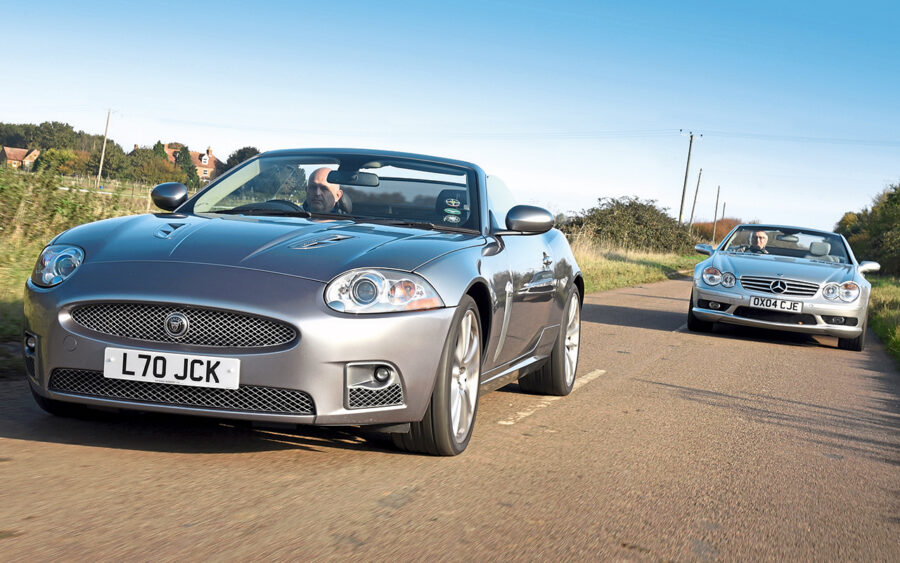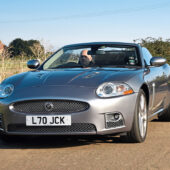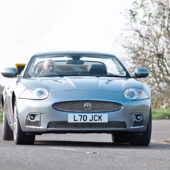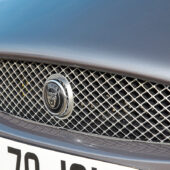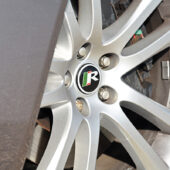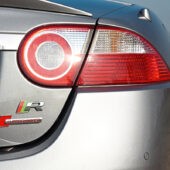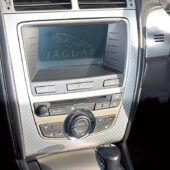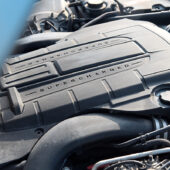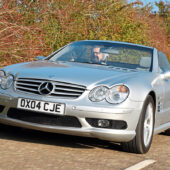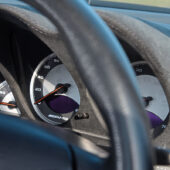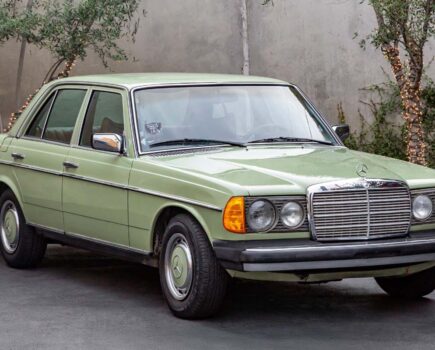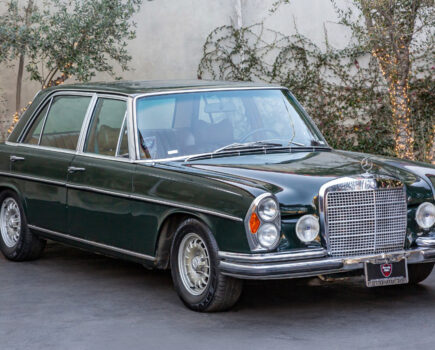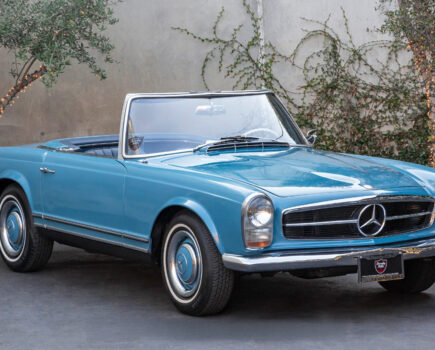In a contest between the refined XKR and ferocious SL55 AMG, which European luxury sports GT comes out on top?
Words and images: Paul Walton
Jaguar versus Mercedes-Benz. It’s a bigger rivalry than Liverpool Football Club and Manchester United, older than Apple and Microsoft, and just as bitter (so I’m told) as Taylor Swift and Katy Perry. The car manufacturers’ conflict became even more heated during the mid-2000s with the launch of the X150 XKR. With 420bhp from its supercharged 4.2 V8 resulting in a sub-five-second 0-60mph time, it was more than a match for the Mercedes SL55 AMG 5.4, the recognised leader of post-millennium GTs like these.
To decide once and for all which is the better choice between these two monstrous sports cars, we’re reigniting the rivalry by once more pitching them against each other.
The Mercedes SL has a heritage every bit as strong as the XK’s. The first model to bear the name was the legendary 300 SL, which was developed from a racing car that won the 1952 Le Mans 24 Hours. The production model that appeared two years later became more famous for its gullwing doors than its performance. Its 1963 replacement, internally known as W113, was a more traditional two-seater sports car and a rival to the E-type. The car set new standards for quality and reliability and did much to start the Mercedes legend, a fact reinforced by the R107, which was, perhaps, the most famous model of them all. On sale between 1971 and 1989, its beautiful proportions and solid reliability (and being the car of choice for Bobby Ewing in Dallas) made it popular for more than 25 years.
The next generation of SL, the R129, was larger and boxier and not considered by many to be as handsome as its predecessor (or the XJ-S convertible, for that matter), but it was the first to have a model developed by AMG.
It was the former MB engineers Hans Werner Aufrecht and Erhard Melcher who founded AMG in 1967 (the moniker is a combination of their surnames and Großaspach, Aufrecht’s birth town) and the company began by designing and testing racing engines. It later expanded into building modified road cars based upon standard Mercedes’ cars, initially producing a range of unofficial upgrade and accessories packages for Mercedes’ road cars, starting with the R107.
In 1990, AMG signed an agreement with Daimler-Benz (Mercedes’ parent company) allowing its tuning options and cars to be sold through Mercedes-Benz showrooms. In 1999, Daimler AG (then known as DaimlerChrysler AG following its 1998 merger with the American company) bought the controlling share of AMG. Today, it is the performance arm of the company, still independently developing Mercedes’ fastest models at its headquarters outside Stuttgart, in the same way Alpina does for BMW, SVO does for Jaguar, and Halfords does for anyone under the age of 20.
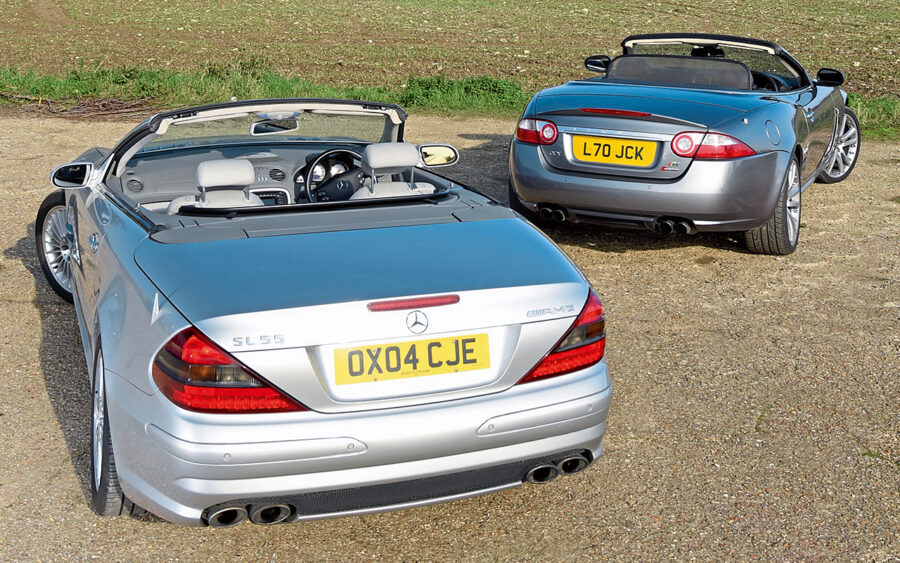
In 2002, the R129 gave way to the R230. Based on an all-new platform, it featured a curvier design with better proportions than its angular predecessor. It was also the first generation of SL to feature a folding hardtop. AMG again developed two models of the new car: the SL65 with a 6.0 V12, and the SL55 AMG, which was powered by a twin supercharged 5.4 V8. And that’s what we have here.
I’m not convinced that this silver 2004 example is as pretty as the 2007 Lunar Grey XKR alongside, because even the design of this AMG is too generically Mercedes-Benz. The double elliptical headlights and large grille, for example, make the nose too similar to the C- and E-Class saloons from the same era. It also looks too big and too flabby to be a proper sports car, a heavyweight compared to the welterweight XKR, in part due to the roof. While the hardtop does feature a clever double-folding action that neatly concertinas into a compact pack to be stored under the bootlid, the SL’s tail is not so svelte as the XK’s pert behind.
It’s worth pointing out that the R230 was facelifted in 2005, around the same time as the X150 made its debut (coincidence?), but the physical changes were minor, consisting of just a new front bumper with three large cooling intakes. However, there was also a seven-speed automatic gearbox and active body control (ABC) to reduce body movement, while power from the 5.4 V8 in the SL55 AMG was also increased to an eye-watering 510bhp. It would take the XKR’s own 2009 facelift, with the introduction of the supercharged 5.0-litre, before Jaguar could match that.
The XK features crisper, tauter lines than the SL, so it suffers from fewer excesses, especially at the rear. The lighter, smaller and, therefore, easier to package canvas roof is obviously a major influence on this. In a 2005 interview with the American magazine Motor Trend, Jaguar’s studio director Ian Callum explained why he didn’t design something similar to the German car. “We looked at doing just one car with a folding metal hardtop like the Mercedes SL,” he said, “but that’s a three-box car. That’s not a Jaguar.” He was right, of course; whether in coupe or convertible form, the XK has one of the prettiest silhouettes in Jaguar’s recent back catalogue.
Physically smaller, narrower and sleeker than the fat-cat Merc, it’s like comparing a whippet with a boxer. And, although there’s no mistaking it’s a Jaguar (that E-type-inspired oval mouth is something of a giveaway), it still has its own personality, contrasting well to the saloons of the time. Almost 15 years after it first went on sale, the car remains contemporary, a testament to the genius of Callum’s design.

Arriving in 2006, the X150 generation of XK replaced the aging X100 that had been on sale since 1996. The X150 was constructed from aluminum, which made it faster, lighter and a more focused sports car than the X100. This was especially true of the XKR, with its supercharged 4.2-litre V8 that produced 420bhp, and was Jaguar’s obvious riposte to the SL55 AMG. Although the Mercedes had 75bhp more, the Jaguar boasted a very similar performance because it was lighter: 60mph took just 4.9 seconds and it had a 155mph top speed.
Yet, no matter the XK’s figures, it lacks some of the Mercedes’ breeding. AMG’s engines are hand-produced at its Affalterbach factory and bear a plaque with the builder’s signature – in this case, one Soen Hermann. This provides the German car with an exclusive aura that the Jaguar’s mass-produced, off-the-shelf V8 from Ford’s Bridgend factory could only dream of. This example was probably put together by several Alwyns and a few Dafydds; without a plaque, we’ll never know.
Inside the Merc, its quality materials, from the sumptuous leather covering the dash to the thick plastic switches, and the nicely damped feel of the indicator stalk to the tight panel gaps, also create a more exclusive environment than the Jaguar’s. However, the design of the XK’s dash is more modern (this example does not have veneer, although it was still an option) than the SL’s fussy layout, but the number of cheap-feeling touchpoints is not compatible with what was once a £70,000 sports car. Compared to the Mercedes’ four individual suede-covered cowled dials, the XK’s plastic dial binnacle looks very ordinary, as if sourced from a cheap saloon.
Another big difference between them is space. While the SL55 AMG is a comfortable two-seater, the XKR – on paper, at least – has room for four. In reality, there’s so little room behind the front seats that the rear is best left for extra storage. Or children. Or people you dislike. Or both.
The SL55 feels solid, heavy, almost indestructible, and the doors close with a deeper-sounding thunk – worthy of Mercedes’ reputation for reliability, as well as the car’s original £90k list price. Plus, despite this example being 16 years, there’s barely a mark on it. It has covered the same mileage as the Jaguar (around 67k), yet the XKR is suffering from messy scabs on the doors, the result of water getting beneath stone chips and oxidizing with the aluminium. It’s a common and easily fixable problem, but it impairs the look of this otherwise beautiful car.
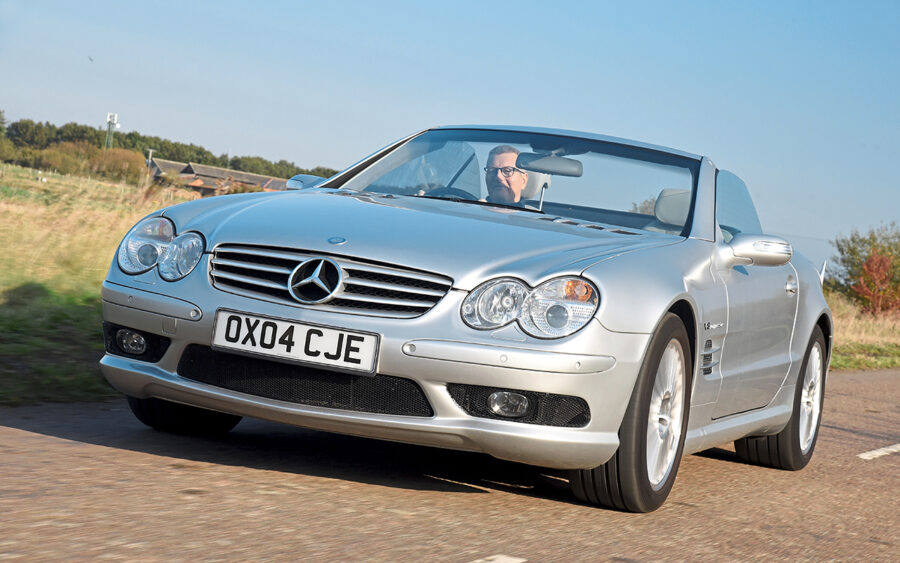
Yet, as to which I’d choose, that isn’t as straightforward as the Mercedes simply being better built than the Jaguar; in the 2006 Top Gear reliability survey – which looked at quality and craftsmanship as well as driving experience and ownership costs – the SL finished close to the bottom in a lowly 132nd place. Although the XK was too new to be included, Jaguar was placed ninth in the manufacturer’s rankings, four ahead of Mercedes-Benz.
Thoughts of the German car’s positioning in an old survey are instantly forgotten the moment I press the starter button and ignite its huge 5.4-litre engine. Even before slotting the five-speed ’box into drive and releasing the regular Mercedes foot-operated parking brake, the engine emits a deep, baritone growl, which grows exponentially into a menacing bark under acceleration. Like a tropical storm, a sonic boom or Christmas carolers at your door, it can be a disturbing noise.
It’s difficult to put into words quite how fast the SL55 is and the closest I can get is to think of plummeting head first to the earth from an enormous height, minus a parachute. With nothing to slow acceleration, your speed would increase to a maximum velocity that would leave a messy stain on the landscape; that (hopefully) won’t happen in the Mercedes, due to sharp and responsive brakes. But, with twin-superchargers compared to the Jaguar’s one, the feeling of being out of control and the seemingly never-ending acceleration is, to my mind, the same as freefalling. It’s more vicious than the Jaguar, the power delivery is harder, and the noise louder.
And then, we arrive at a corner. Obviously, with fat sticky rubber and plenty of driving aids, grip isn’t going to be a problem, especially on a dry day like this. But the steering isn’t as quick or as precise as the Jaguar’s and, as I power around the bend the SL’s considerable weight makes itself known.
At 1,955kg, the SL55 AMG is almost 500kg heavier than the all-aluminium XKR, in part due to the car’s steel chassis and partly because of the car’s high specification – including that heavy, folding hardtop. Although the SL does have some aluminium panels to improve weight distribution, and this 2003 model doesn’t have the ABC system of later cars, it noticeably lacks the litheness of the smaller, lighter XKR. But can the Jaguar match the Mercedes’ performance?
With just half a second separating the two car’s 0-60mph times – otherwise known as blinking speed – the difference between them shouldn’t be too obvious. Yet when I squeeze the Jaguar’s throttle, it’s immediately clear the XK isn’t on a par with the Mercedes. It’s fast by normal standards, but lacks the ferociousness and all-powerful performance.
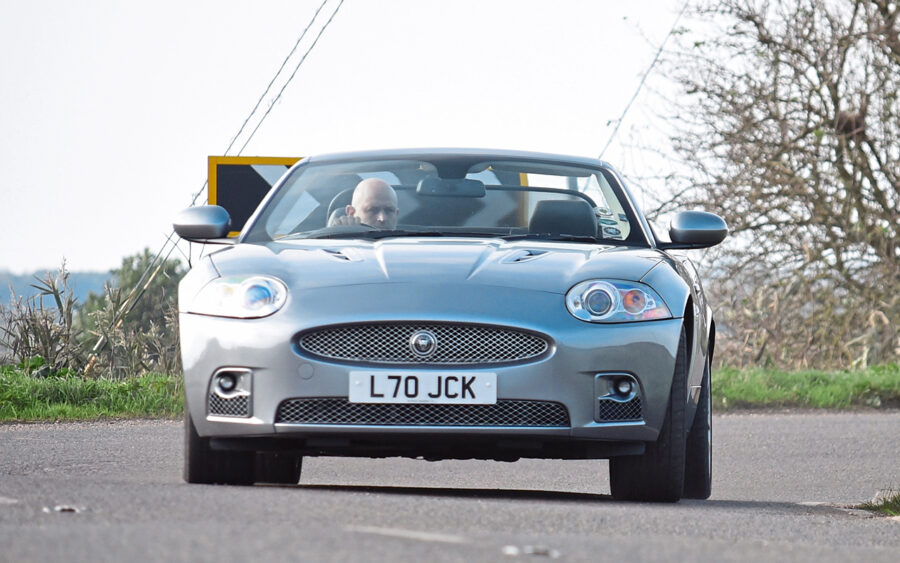
Where the XKR does impress is through its mid-range punch: squeeze the throttle at 60mph and the six-speed gearbox kicks down faster than the Mercedes’ five-speed unit to instantly push us forward on a long, smooth wave of torque.
As mentioned earlier, the X150 is constructed entirely from aluminium. As well as impacting on the car’s weight, it affects how it moves. The XK might weigh 1,560kg, but I don’t feel it due to firmly damped suspension, nicely controlled body roll and close-to-perfect weight distribution (assisted by the lighter canvas roof) that enables me to carve through corners more confidently than I can in the SL55 AMG.
Together with the steering, which is faster and more accurate, the XK feels more like an agile sports car; the Mercedes is a lumbering grand tourer like the older X100 or even the XJS. The downside, though, is the XK’s ride isn’t up to the SL’s standards, thumping harder over potholes.
Bearing in mind the Mercedes’ incredible performance and hand-built exclusivity, it’s easy to understand why the car has a considerable premium over the Jaguar – whereas XKR 4.2s are now worth between £9k and £22k, SL55 AMG 5.4s are anywhere from £15,000 to £40,000 (depending on age, mileage and specification).
There’s no denying the Mercedes SL55 AMG’s strengths – mainly its speed, performance and improved build quality – but the Jaguar is prettier, more contemporary and better to drive. Plus, it’s cheaper.
Currently, Jaguar is in every market you’ll find a Mercedes; so, from diesel saloons to performance SUVs, their rivalry is set to continue. But, back in the mid-2000s, this feud definitely went the XK’s way.

